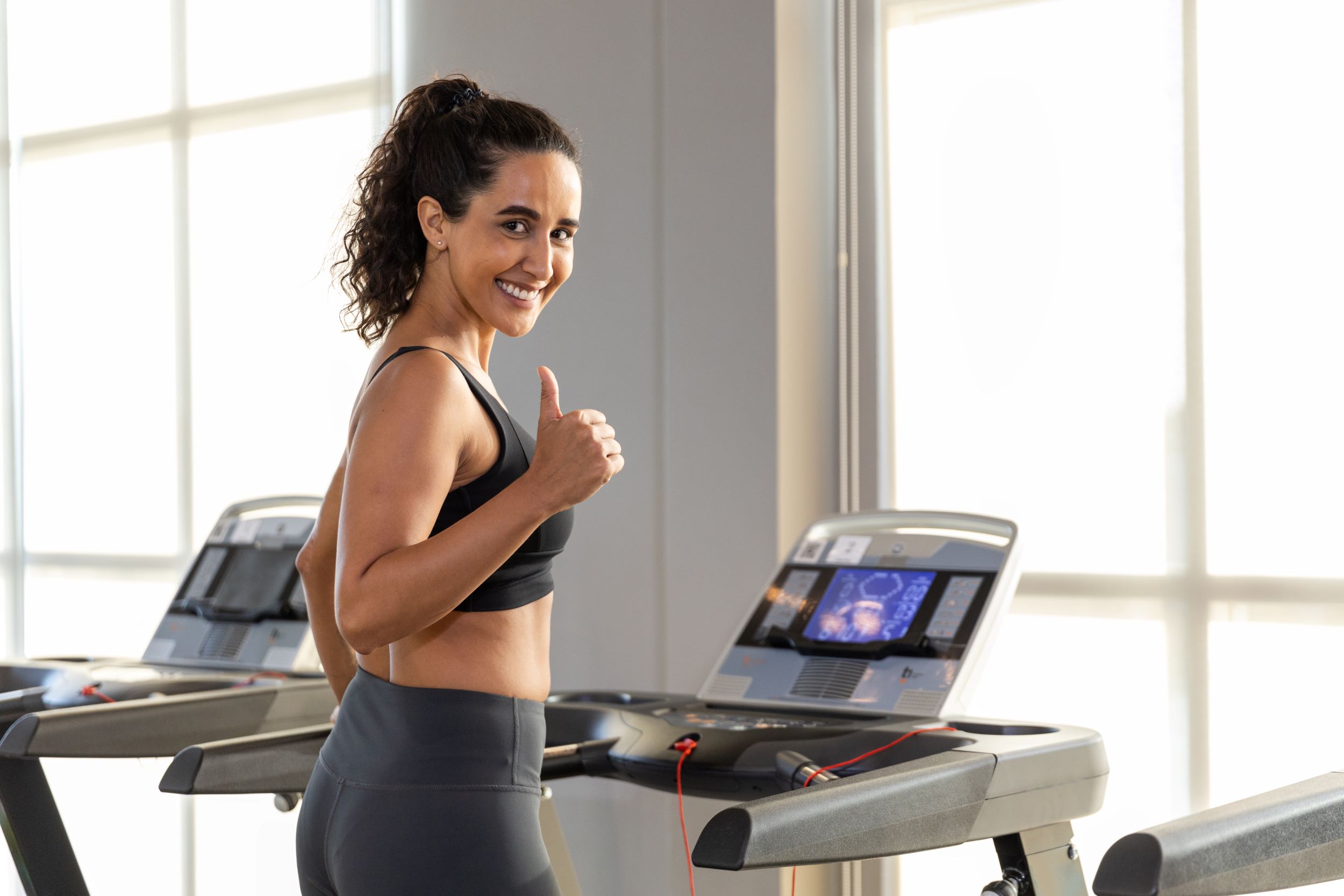Running is not just a sport; it’s a *lifestyle*. For those looking to shed a few pounds, running can be an incredibly effective way to achieve weight loss goals. By combining cardiovascular exercise with endurance training, running helps to burn calories, improve metabolism, and build lean muscle mass. The best running workouts for weight loss are those that are tailored to individual fitness levels and goals, ensuring that every step taken is a leap towards fitness freedom.
Whether you’re a seasoned runner or a beginner, the joy of running lies in its simplicity and accessibility. No expensive gym memberships or complex equipment are required. All you need is a good pair of running shoes, a positive mindset, and a commitment to your health. Running offers a sense of freedom and empowerment that few other workouts can match.
At Run Just For Fun, we believe in embracing the joy of running and discovering trailblazing adventures. Our community is dedicated to helping you sculpt your workout routine and achieve your fitness goals. Visit our website to learn more and get started today! Click here.
Understanding the Benefits of Running for Weight Loss

Running is more than just a way to get from point A to point B; it’s a powerhouse when it comes to weight loss. One of the primary benefits of running is its ability to burn a significant number of calories in a relatively short amount of time. This makes it one of the most efficient exercises for weight loss. For instance, a person weighing 155 pounds can burn approximately 300 calories by running at a moderate pace for just 30 minutes.
Another key benefit is the boost in metabolism. Running stimulates the production of certain hormones and enzymes that help in breaking down fat and sugars in the body. This metabolic boost can continue even after the run has ended, a phenomenon known as the ‘afterburn effect’ or excess post-exercise oxygen consumption (EPOC).
Beyond burning calories, running also helps build lean muscle mass, particularly in the lower body. Stronger muscles mean a higher resting metabolic rate, which translates to more calories burned even when you’re not exercising. Additionally, running improves cardiovascular health, enhancing your body’s ability to deliver oxygen and nutrients to tissues.
Running also has mental health benefits, which are crucial for maintaining a healthy weight. The release of endorphins during a run can improve mood and reduce stress, making it easier to stick to a weight loss plan. Furthermore, setting and achieving running goals can build confidence and provide a sense of accomplishment, fueling further commitment to your weight loss journey.
High-Intensity Interval Training (HIIT) for Effective Fat Burn

High-Intensity Interval Training (HIIT) has become a popular choice for those looking to maximize their fat-burning potential. This workout method involves alternating between short bursts of intense activity and periods of low-intensity recovery or rest. HIIT workouts are exceptionally effective because they push your body to its limits, which results in a higher calorie burn both during and after the workout.
One of the main advantages of HIIT is efficiency. A typical HIIT session can last as little as 20-30 minutes but can yield results comparable to longer, moderate-intensity workouts. This makes it an ideal choice for those who are short on time but still want to achieve significant fat loss results.
The science behind HIIT’s effectiveness lies in its ability to elevate your heart rate quickly and keep it elevated throughout the workout. This not only burns a substantial number of calories but also improves cardiovascular health. Additionally, the intense bursts of activity cause your body to use more oxygen, which in turn increases your metabolic rate. This post-exercise oxygen consumption, or the ‘afterburn effect’, means you continue to burn calories at an elevated rate even after you’ve finished your workout.
Another benefit of HIIT is its ability to preserve muscle mass while promoting fat loss. The intense intervals stimulate muscle-building hormones, helping you maintain and even increase lean muscle mass, which is crucial for a higher resting metabolic rate. This is particularly important for those who are aiming for long-term weight loss and overall fitness.
Incorporating HIIT into your running routine can be simple and highly effective. For example, you can alternate between sprinting for 30 seconds and jogging or walking for one minute. Repeat these intervals for 20-30 minutes, and you’ll have a powerful fat-burning workout that’s both time-efficient and highly effective.
Incorporating Long Steady Runs for Endurance and Calorie Burn

While High-Intensity Interval Training (HIIT) offers quick and potent fat-burning results, incorporating long steady runs into your workout routine can significantly enhance your endurance and contribute to calorie burn over time. Long steady runs, typically performed at a moderate, sustainable pace, are an excellent way to build your aerobic capacity and stamina, which are crucial for overall fitness and weight loss.
One of the main benefits of long steady runs is their ability to improve cardiovascular health. Running for extended periods at a steady pace helps strengthen your heart and lungs, allowing your body to deliver oxygen and nutrients more efficiently to your muscles. This improved cardiovascular efficiency not only supports your running performance but also enhances your general health and well-being.
Another advantage of long steady runs is that they can help you burn a substantial number of calories. Although the calorie burn rate is lower compared to HIIT, the extended duration of these runs means you can still achieve significant calorie expenditure. For example, a long run of 60-90 minutes can help you burn upwards of 600-900 calories, depending on factors such as your weight, pace, and terrain.
Long steady runs are also excellent for mental endurance. Spending an extended period on the trail or road requires mental fortitude and focus, helping you build resilience and determination. This mental toughness can translate into other areas of your life, making it easier to stick to your fitness and weight loss goals.
To incorporate long steady runs into your routine, aim to dedicate one day a week to this type of workout. Start with a distance or duration that feels challenging but manageable and gradually increase it over time. Pay attention to your body’s signals and ensure you’re adequately fueled and hydrated before, during, and after your run. Combining these runs with your HIIT sessions creates a balanced workout regimen that promotes both fat loss and overall fitness.
Tips for Creating a Balanced Running Workout Routine
.jpg)
Creating a balanced running workout routine is essential for achieving your weight loss goals while maintaining overall fitness and preventing injury. A well-rounded plan should include a mix of different running workouts, strength training, and proper recovery. Here are some tips to help you design a balanced routine:
1. Diversify Your Runs: Incorporate a variety of running workouts, such as HIIT, long steady runs, tempo runs, and hill workouts. Each type of run offers unique benefits, from improving speed and endurance to enhancing strength and calorie burn.
2. Schedule Strength Training: Include strength training sessions at least two times a week. Focus on exercises that target your core, legs, and upper body to build muscle, improve stability, and enhance your running performance. Strong muscles also help prevent injuries by providing better support to your joints.
3. Prioritize Recovery: Allow your body adequate time to recover between intense workouts. Incorporate rest days and active recovery days, such as light jogging or walking, into your schedule. Proper recovery helps prevent burnout and reduces the risk of overuse injuries.
4. Listen to Your Body: Pay attention to how your body feels during and after workouts. If you experience pain or extreme fatigue, it might be a sign that you need more rest or a change in your routine. Adjust your plan accordingly to prevent injuries and ensure long-term success.
5. Set Realistic Goals: Set achievable and specific goals for your weight loss and fitness journey. Break them down into smaller milestones and celebrate your progress along the way. This will keep you motivated and focused on your long-term objectives.
6. Stay Consistent: Consistency is key to seeing results. Stick to your workout schedule as closely as possible, but be flexible and willing to make adjustments when needed. Remember that it’s better to have a slightly modified workout than to skip it entirely.
By following these tips, you can create a balanced running workout routine that supports weight loss, enhances fitness, and keeps you motivated. A diverse and well-structured plan not only maximizes results but also makes your running experience more enjoyable and sustainable.
Nutrition and Hydration Tips to Complement Running Workouts
Proper nutrition and hydration are crucial components of an effective running workout routine, especially when your goal is weight loss. Fueling your body with the right nutrients and staying hydrated can significantly enhance your performance and recovery. Here are some key tips:
1. Eat a Balanced Diet: Focus on a diet rich in whole foods, including plenty of fruits, vegetables, lean proteins, and whole grains. These foods provide essential vitamins, minerals, and antioxidants that support your overall health and help optimize your running performance.
2. Time Your Meals: Consuming the right foods at the right times can make a big difference. Aim to eat a balanced meal containing carbohydrates, protein, and healthy fats about 2-3 hours before your run. After your workout, refuel with a snack or meal containing protein and carbohydrates within 30-60 minutes to aid recovery and muscle repair.
3. Stay Hydrated: Hydration is key to maintaining performance and preventing fatigue. Drink water throughout the day and pay extra attention to your fluid intake before, during, and after your runs. For longer runs, consider sports drinks that provide electrolytes to replace those lost through sweat.
4. Monitor Portion Sizes: While it’s important to fuel your body, be mindful of portion sizes to avoid overeating. Eating smaller, more frequent meals can help keep your energy levels stable and prevent the urge to overeat.
5. Listen to Your Body: Everyone’s nutritional needs are different. Pay attention to how your body responds to different foods and adjust your diet accordingly. If you experience digestive issues or fatigue, it might be time to reassess your nutrition plan.
6. Limit Processed Foods: Minimize the intake of processed and sugary foods, as they can lead to energy crashes and hinder your weight loss efforts. Opt for natural, nutrient-dense options that provide sustained energy.
By incorporating these nutrition and hydration tips into your routine, you can complement your running workouts and make significant strides towards your weight loss goals. Remember, a well-fueled body performs better, recovers faster, and stays healthier in the long run.
Visit our website to learn more and get started today! Click here.


